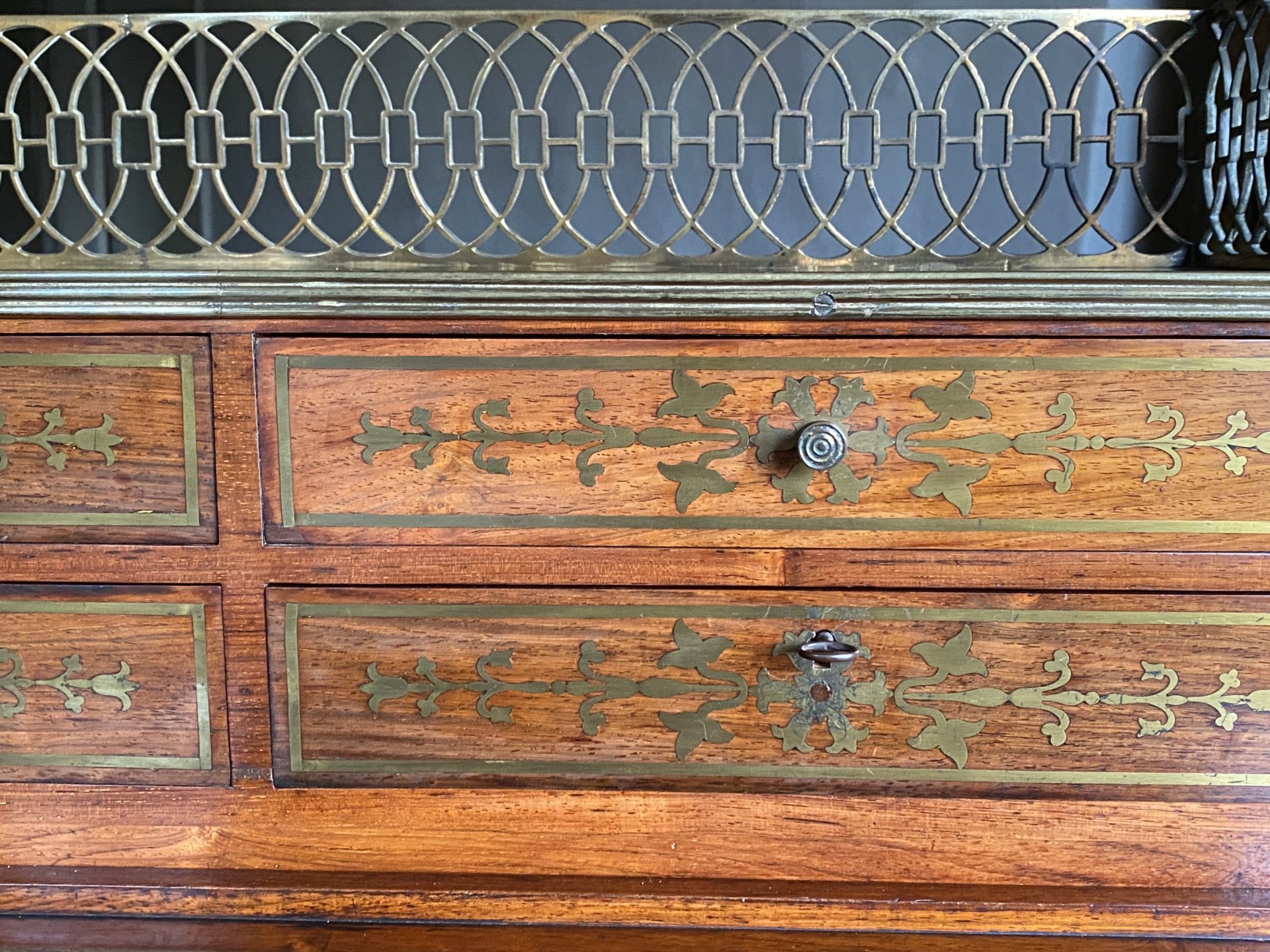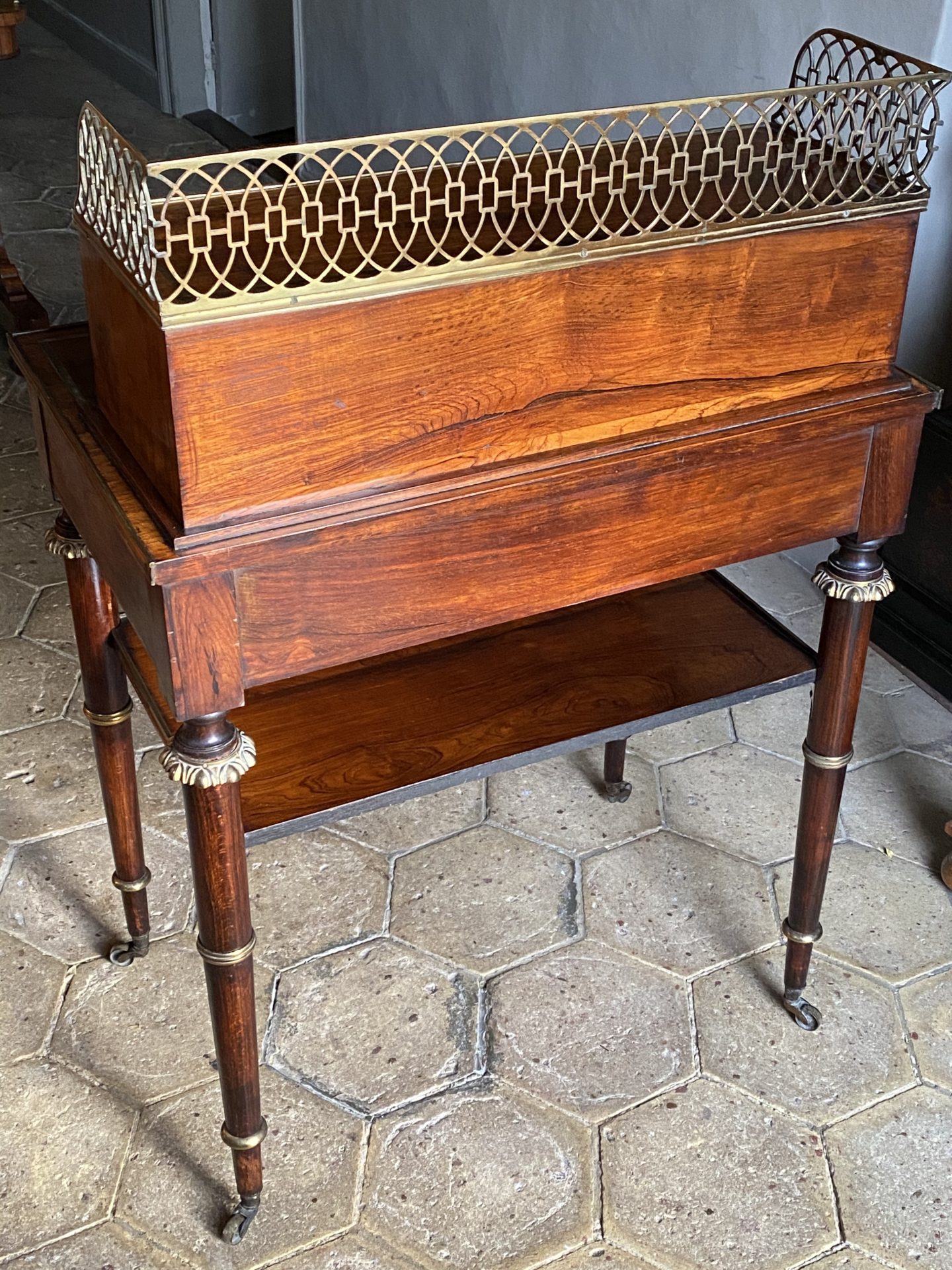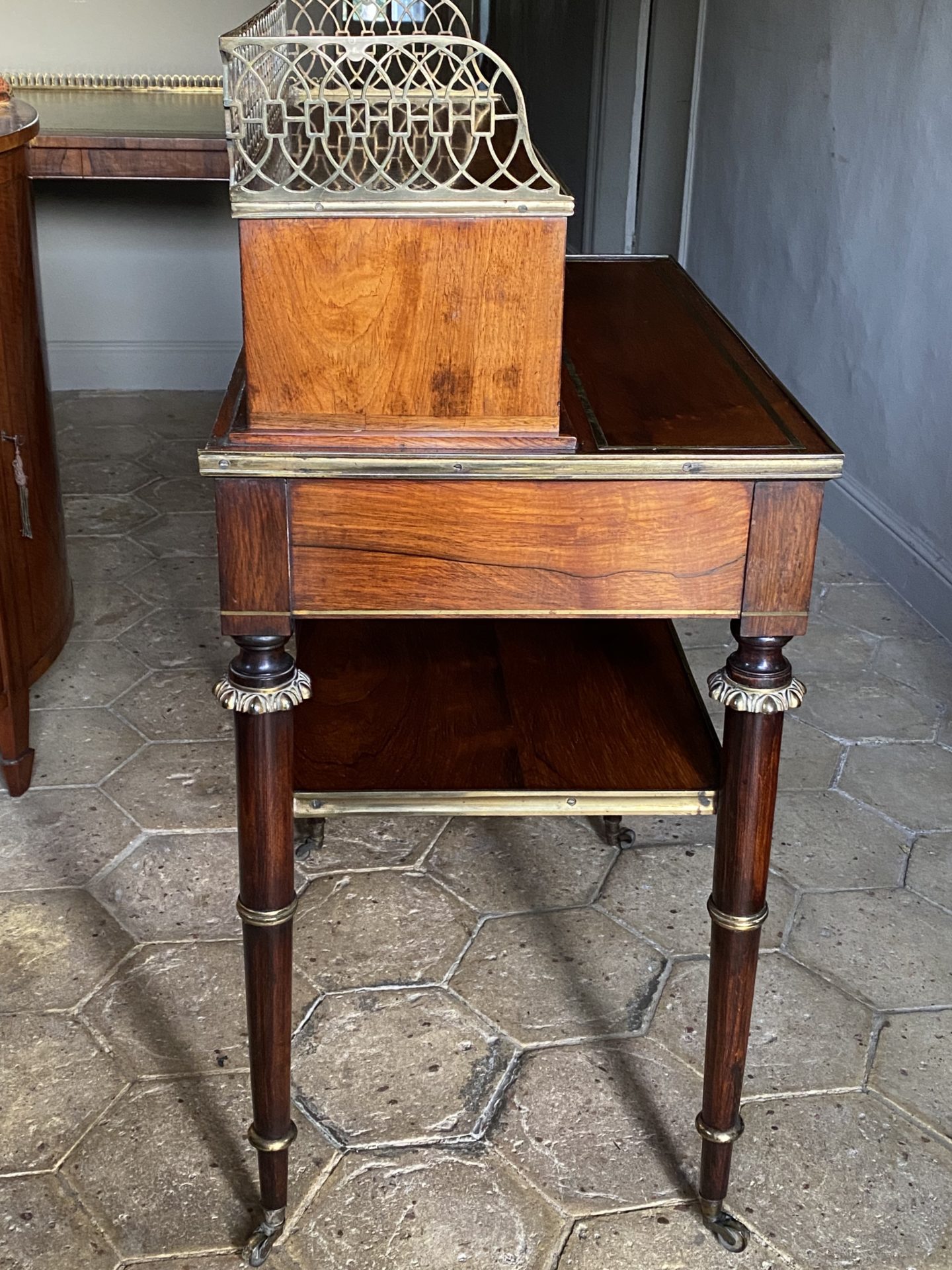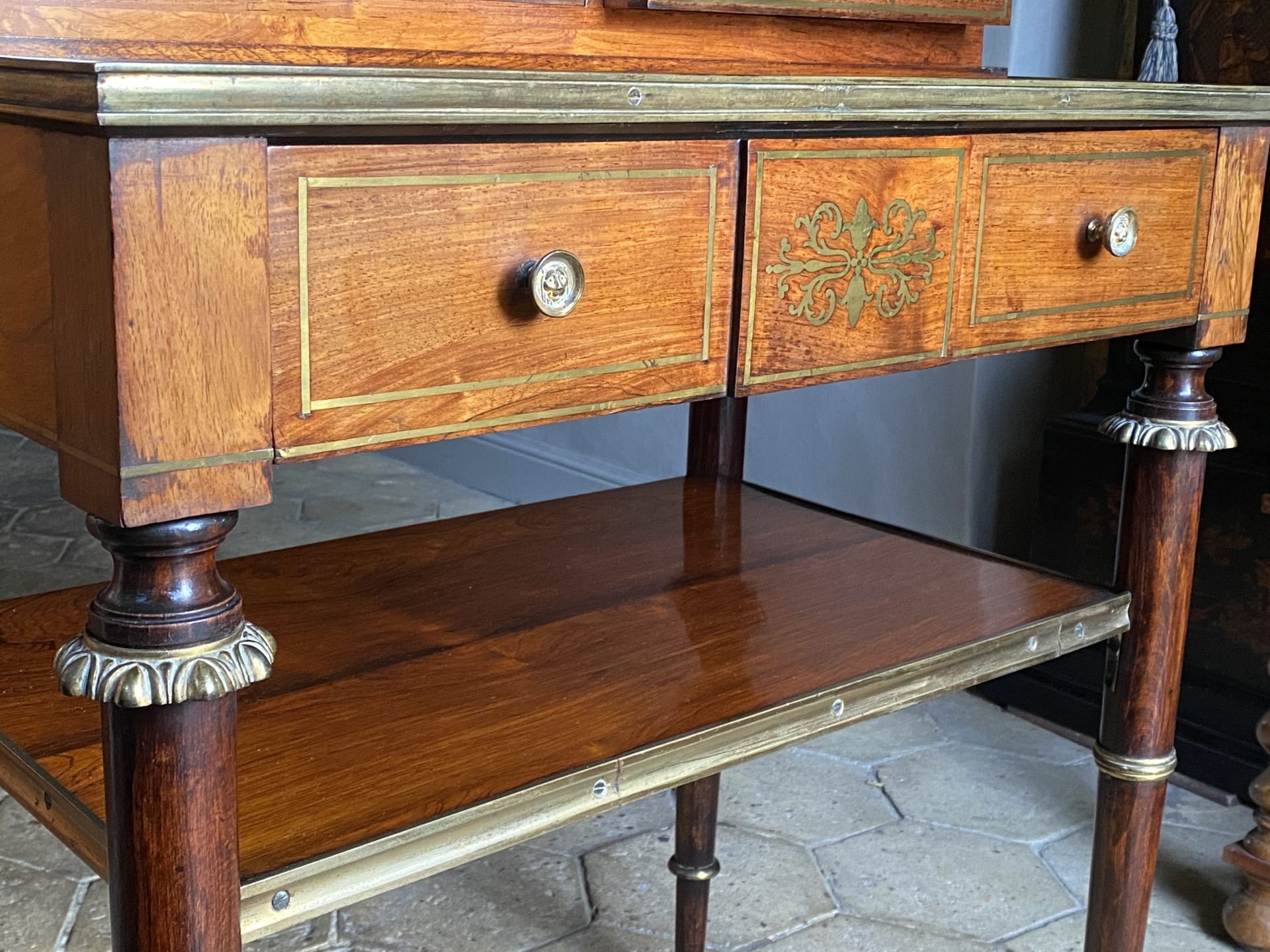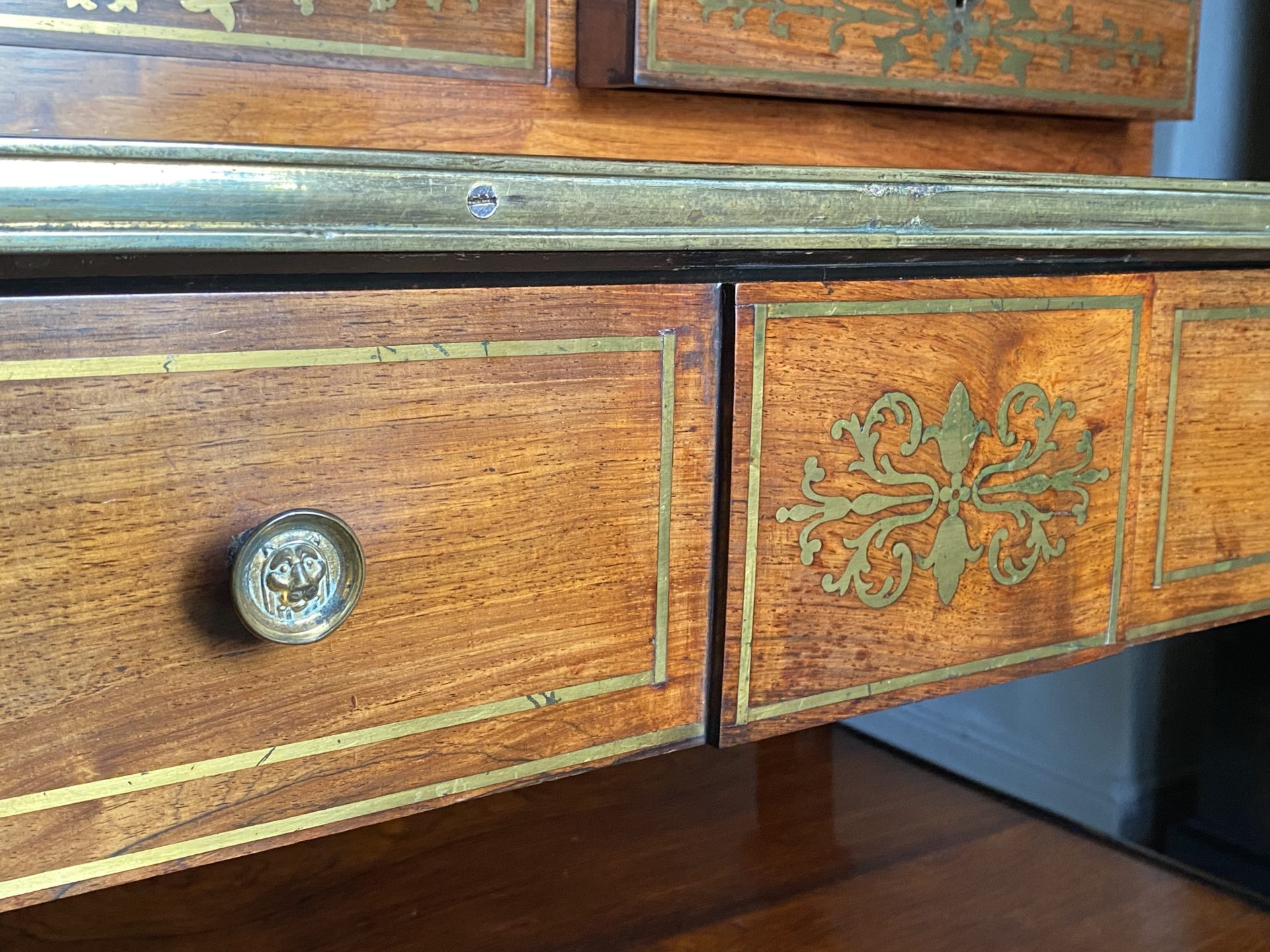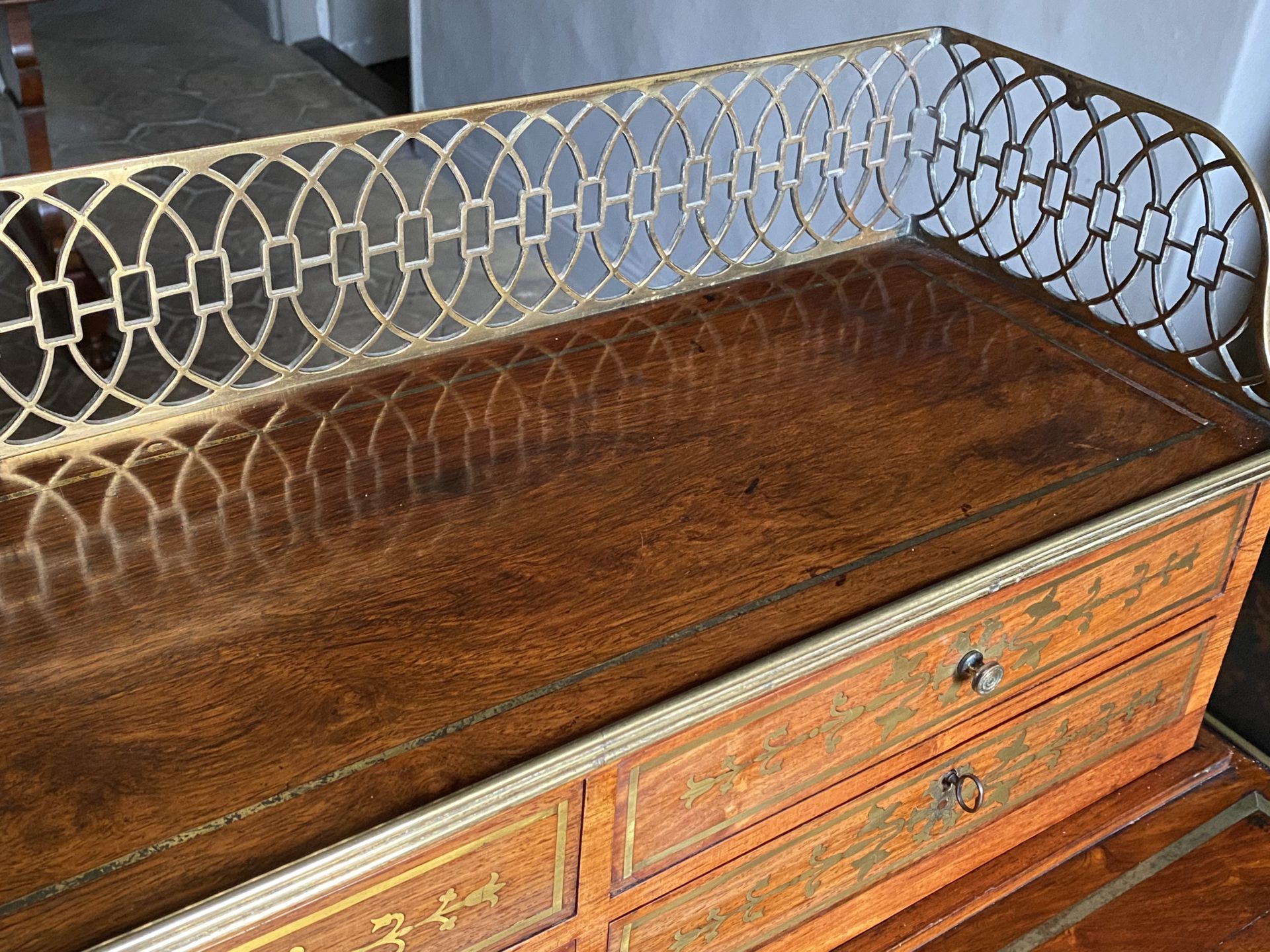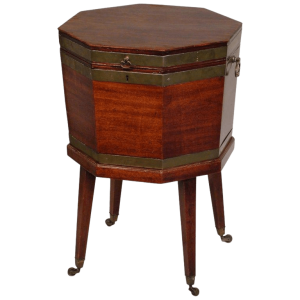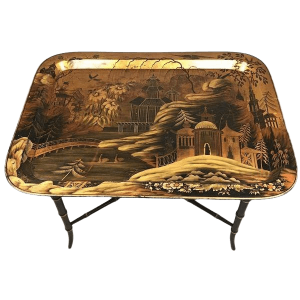Description
An exceptional English Regency-period bonheur du jour attributed to John Maclean, ca 1810.
A fine early-19th century rosewood and brass-inlaid bonheur du jour or writing desk (or chevret) of the highest quality.
Of lovely colour and patina. In superb condition throughout.
John McLean (born 1770, died 1825) was an English furniture- and cabinet-maker and designer. He was recognised as one of the best of his era, representing the best in English cabinet making. Examples of his furniture can be found in the Victorian and Albert Museum, The California Palace of the Legion of Honor and the Library at Saltram, Devon.[1]
The origins of the McLean firm is somewhat confused by the many variations in spelling the name ‘McLean’. “John MacKlane, upholder and cabinet maker in Little Newport Street, off Leicester Square” is listed in 1774.[2]
References:
Ambrose Heal, The London furniture makers: from the Restoration to the Victorian Era, 1660-1840 (1953).
Simon Redburn, John McLean and Son, Furniture History Vol. 14 (1978).
A bonheur du jour (French, meaning “daytime delight”) is a type of lady’s writing desk. It was introduced in Paris by one of the interior decorators and purveyors of fashionable novelties called marchands-merciers about 1760, and speedily became intensely fashionable.[1] The bonheur du jour is always very light and graceful,[2] with a decorated back, since it often did not stand against the wall (meuble meublant) but was moved about the room (meuble volant); its special characteristic is a raised back, which may form a little cabinet or a nest of drawers, or open shelves, which might be closed with a tambour, or may simply be fitted with a mirror. The top, often surrounded with a chased and gilded bronze gallery, serves for placing small ornaments. Beneath the writing surface there is usually a single drawer,[2] often neatly fitted for toiletries or writing supplies. Early examples were raised on slender cabriole legs; under the influence of neoclassicism, examples made after about 1775 had straight, tapering legs.
Nb. A very similar bonheur du jour also attributed to John Maclean was sold at ‘Tom Devenish: The Collection – Highly Important English Furniture’, Sotheby’s, New York, 24th April 2008 lot 176 for US$37,000.
Further references:
An English Regency period brass-mounted library table attributed to John Maclean was sold by Christies, 18th June 2008, for £109,250.
Vis ‘A Life’s Devotion: The Collection of the Late Mrs T.S. Eliot’, Christies London, 20 Nov 2013, A Regency brass-mounted rosewood side table – attracted to John McLean, ca 1810 – Price realised: £20,000.
See S. Redburn, John McLean and Son, Furniture History (1978) plate 38A, for a comparable chevret table, formerly at Lowther Castle.
Vis also Christie’s, London, 7 December 1971, lot 67, for an unattributed chevret table of the same model but with various differences in the marquetry and design.
Nb. For comparison: The sale of an exceptionally Rare Regency Brass-Mounted Rosewood Table, sold Thomas Coulborn & Sons.
And a Fine Regency Gilded & Gilt Brass Rio Rosewood Canterbury by John McLean & Son – sold Freshfords Fine Antiques.
Further reading:
The firm of McLean and son was established in London around 1770, trading from premises in Little Newport Street, Leicester Square, until 1783. By 1790 the firm had moved to 55 Upper Marylebone Street, later expanding to occupy premises in both Pancras Street and Upper Terrace and continuing in business until 1825. Cabinet-makers of the highest calibre, patronised by such leading connoisseurs as the 5th Earl of Jersey, for whom they worked extensively at Middleton Park, Oxfordshire, and the Earl’s London mansion in Berkeley Square. In Thomas Sheraton’s, The Cabinet Dictionary of 1803, McLean and sons are listed among the foremost English cabinet-makers of the period, and it is some indication of the esteem in which they were held that Sheraton himself made use of one of their designs for a ‘pouch table’, which he illustrated in the Dictionary, (pl.65), remarking that, ‘The design… was taken from one executed by Mr M’Lean in Mary-le-bone street, near Tottenham court road, who finishes small articles in the neatest manner”.





